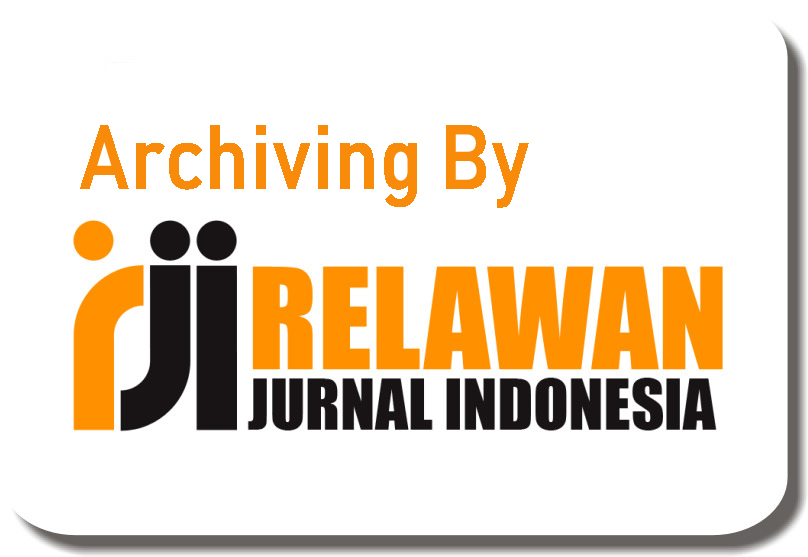The Effect of Cllaborative-Learning Strategy on Students Ability to Write Narrative Essay
Abstract
This article explores the effect of collaborative learning strategies on students' narrative writing. A quasi-experimental study involving two groups showed that the experimental group (m=0.5), demonstrated a noteworthy enhancement on their writing abilities in contrast to the control group. This suggests that collaborative learning strategies enhance writing abilities and increase active participation in learning. The study emphasizes the importance of innovative and interactive learning strategies, especially in language teaching, for optimizing students' narrative writing abilities. The experimental class's average pre-test scores were 72.42, whereas the control groups were 65.67. Following therapy, the average scores of experimental class's roses to 86.13, while the control class's average was 79.33. The result revealed that the p-value (.000) is less than 0.05. The alternative hypothesis (Ha) uses statistical analysis with SPSS and t-test, shows a significant increase in narrative knowledge in the experimental group.
Keywords
Full Text:
PDFReferences
A. R. Sa’adah. (2020). Writing Skill in Teaching English: An Overview. EDUCASIA: Jurnal Pendidikan, Pengajaran, Dan Pembelajaran, 5(1), 21–35.
Afifah, S., Mudzakir, A., & Nandiyanto, A. B. D. (2022). How to Calculate Paired Sample t-Test using SPSS Software: From Step-by-Step Processing for Users to the Practical Examples in the Analysis of the Effect of Application Anti-Fire Bamboo Teaching Materials on Student Learning Outcomes. Indonesian Journal of Teaching in Science, 2(1), 81–92. https://doi.org/10.17509/ijotis.v2i1.45895
Amna Saleem, Huma Kausar, & Farah Deeba. (2021). Social Constructivism: A New Paradigm in Teaching and Learning Environment. PERENNIAL JOURNAL OF HISTORY, 2(2), 403–421. https://doi.org/10.52700/pjh.v2i2.86
Anggraini, R., Rozimela, Y., & Anwar, D. (2020). The Effects of Collaborative Writing on EFL Learners’ Writing Skills and Their Perception of the Strategy. Journal of Language Teaching and Research, 11(2), 335. https://doi.org/10.17507/jltr.1102.25
Dhillon, B. P. S., Herman, H., & Syafryadin, S. (2020). The Effect of Skimming Method to Improve Students’ Ability in Reading Comprehension on Narrative Text. Linguists : Journal Of Linguistics and Language Teaching, 6(1), 77. https://doi.org/10.29300/ling.v6i1.2991
Hasanuddin, D., Emzir, E., & Akhadiah, S. (2019). Improving Students’ Scientific Writing Ability through Blended learning-Based Collaborative Learning. International Journal of Emerging Technologies in Learning (IJET), 14(20), 34. https://doi.org/10.3991/ijet.v14i20.11457
’I, R., D, N., & Y, A. (2020). Teaching Writing Narrative Text by Using Collaborative Learning . PROJECT (Professional Journal of English Education), 3(3), 329–336.
Jiang, D., & Kalyuga, S. (2022). Learning English as a Foreign Language Writing Skills in Collaborative Settings: A Cognitive Load Perspective. Frontiers in Psychology, 13. https://doi.org/10.3389/fpsyg.2022.932291
Keen, J. (2020). Writing Revision: Evidence for Learning. Changing English, 27(2), 121–136. https://doi.org/10.1080/1358684X.2019.1653169
Le, H., Janssen, J., & Wubbels, T. (2018). Collaborative learning practices: teacher and student perceived obstacles to effective student collaboration. Cambridge Journal of Education, 48(1), 103–122. https://doi.org/10.1080/0305764X.2016.1259389
Lingard, L. (2021). Collaborative writing: Strategies and activities for writing productively together. Perspectives on Medical Education, 10(3), 163–166. https://doi.org/10.1007/S40037-021-00668-7
Maulidah, U. N., & Aziz, I. N. (2020). the effectiveness of online Collaborative Learning on student writing skill. EDUCATIO: Journal of Education, 5(2).
Mohajan, H. (2020). Quantitative Research: A Successful Investigation in Natural and Social Sciences. . Journal of Economic Development, Environment and People, 4(9), 52–79.
Nawabi, S., Bilal, R., & Javed, M. Q. (2021). Team-based learning versus Traditional lecture-based learning: An investigation of students’ perceptions and academic achievements. Pakistan Journal of Medical Sciences, 37(4). https://doi.org/10.12669/pjms.37.4.4000
Pham, V. P. H. (2021). The Effects of Collaborative Writing on Students’ Writing Fluency: An Efficient Framework for Collaborative Writing. SAGE Open, 11(1), 215824402199836. https://doi.org/10.1177/2158244021998363
Rogers, J., & Révész, A. (2019). Experimental and quasi-experimental designs. In The Routledge Handbook of Research Methods in Applied Linguistics (pp. 133–143).
Sari, I. P., & Susiani, S. (2021). The Effects of Jigsaw, Student Teams Achievement Divisions (Stad), and Think-Pair-Share (Tps) Techniques in Writing Narrative Text. Journal of Educational Sciences, 5(1), 66. https://doi.org/10.31258/jes.5.1.p.66-79
Sekarinasih, A. (2022). Implementasi Metode Collaborative Learning untuk Meningkatkan Keterampilan Interpersonal Mahasiswa. QUALITY, 10(1), 1. https://doi.org/10.21043/quality.v10i1.13830
Teng, (Mark) Feng. (2020). Young learners’ reading and writing performance: Exploring collaborative modeling of text structure as an additional component of self-regulated strategy development. Studies in Educational Evaluation, 65, 100870. https://doi.org/10.1016/j.stueduc.2020.100870
Thirakunkovit, S., & Boonyaprakob, K. (2022). Developing Academic Writing Skills through a Task-Based Approach: A Case Study of Students’ Collaborative Writing. REFLections, 29(3), 526–548. https://doi.org/10.61508/refl.v29i3.261319
DOI: https://doi.org/10.31004/jele.v9i5.550
Refbacks
- There are currently no refbacks.
Copyright (c) 2024 Kurnia Rahmawaty

This work is licensed under a Creative Commons Attribution-ShareAlike 4.0 International License.



